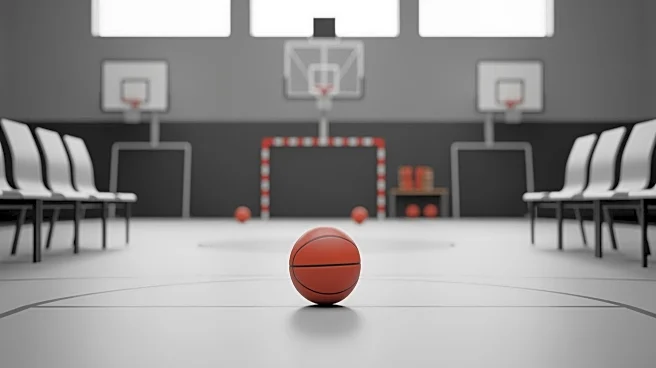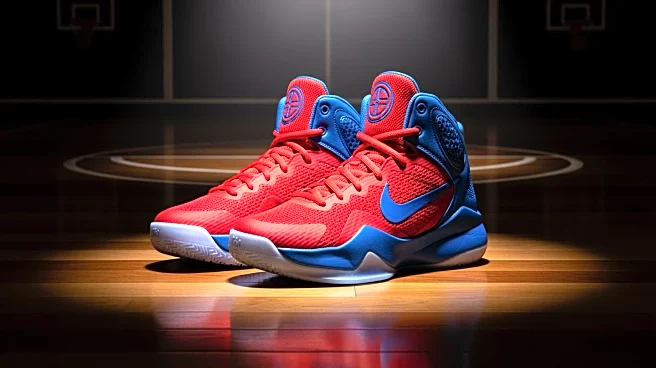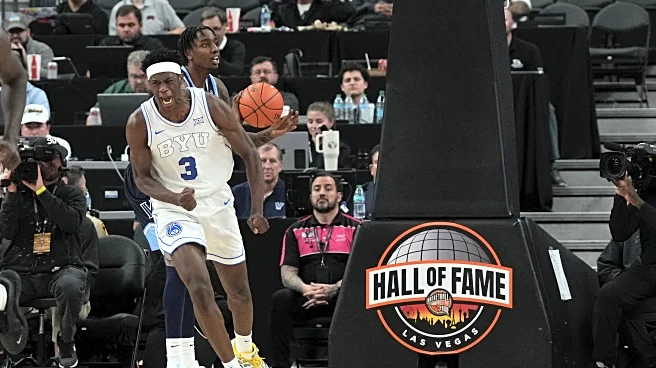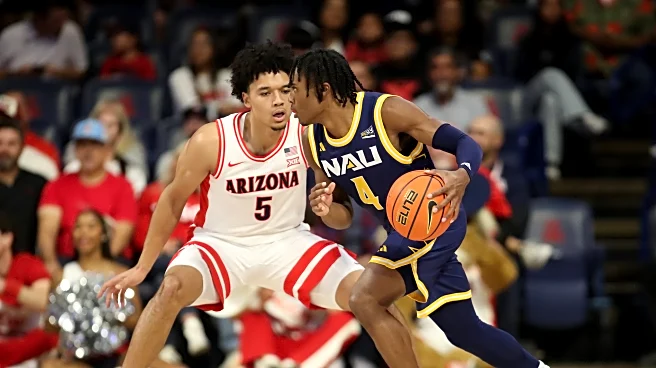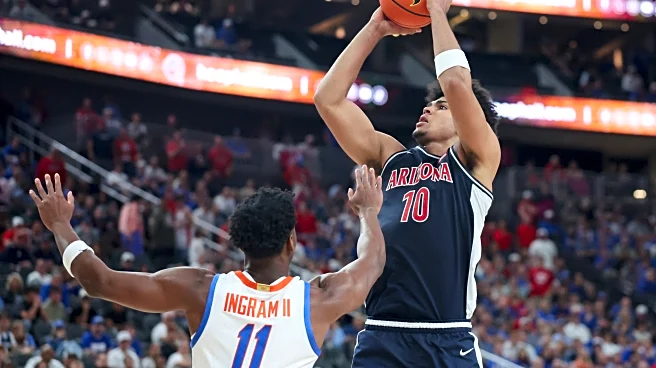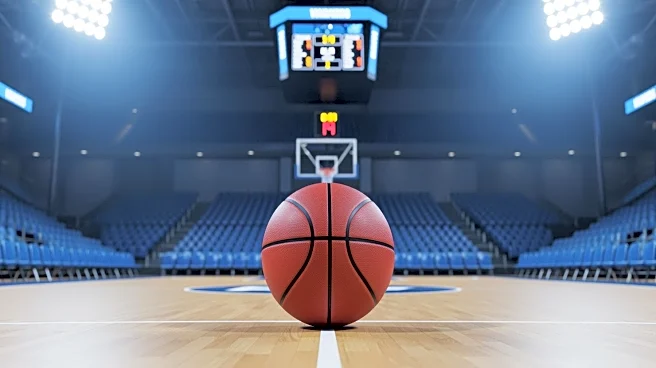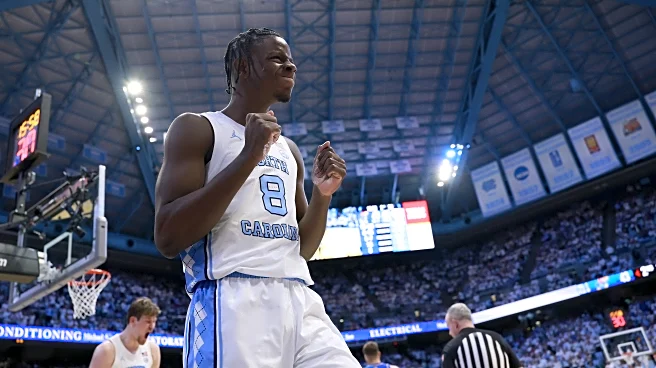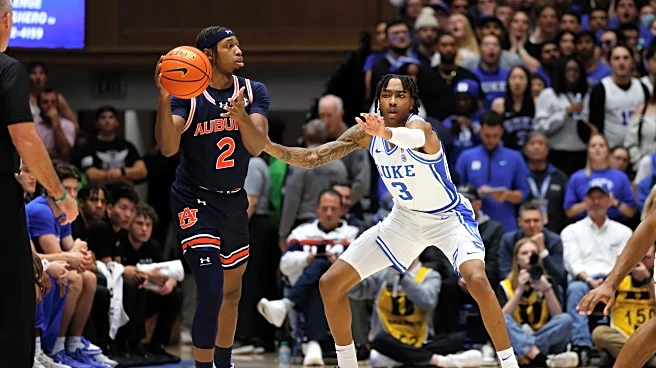What's Happening?
Bryce James, the youngest son of LeBron James, has yet to make his debut for the University of Arizona men's basketball team. Despite Arizona's convincing 84-49 victory over Northern Arizona University,
James did not participate in the game. Arizona has won all three of its games this season, with each victory occurring in Tucson. James, a freshman guard and a consensus three-star recruit, has not played in any of the team's first three games. Although Arizona's head coach Tommy Lloyd mentioned the possibility of redshirting James, the player himself expressed eagerness to play during a recent interview. Arizona's upcoming games against No. 15 UCLA and No. 3 UConn suggest that James may continue to wait for his opportunity to join the rotation.
Why It's Important?
Bryce James' absence from the court is significant due to his high-profile status as LeBron James' son and the expectations surrounding his basketball career. His potential redshirt status could impact his development and visibility in college basketball. For the University of Arizona, integrating a player of James' caliber could enhance their competitive edge, especially in high-stakes games against ranked opponents. The decision to keep James benched may reflect strategic considerations by the coaching staff, balancing immediate team performance with long-term player development.
What's Next?
Arizona's upcoming schedule includes challenging matchups against No. 15 UCLA and No. 3 UConn, which may further delay Bryce James' debut. The coaching staff's decision on whether to redshirt James will likely depend on his readiness to contribute to the team and the dynamics of the current roster. Fans and analysts will be watching closely to see if James will eventually take the court and how his presence might influence the team's performance in future games.
Beyond the Headlines
Bryce James' situation highlights broader themes in college sports, such as the pressure on young athletes with famous parents and the strategic decisions involved in player development. The potential redshirt decision underscores the balance between immediate team needs and nurturing talent for future seasons. This scenario also reflects the cultural impact of basketball dynasties and the expectations placed on athletes who are part of such legacies.
